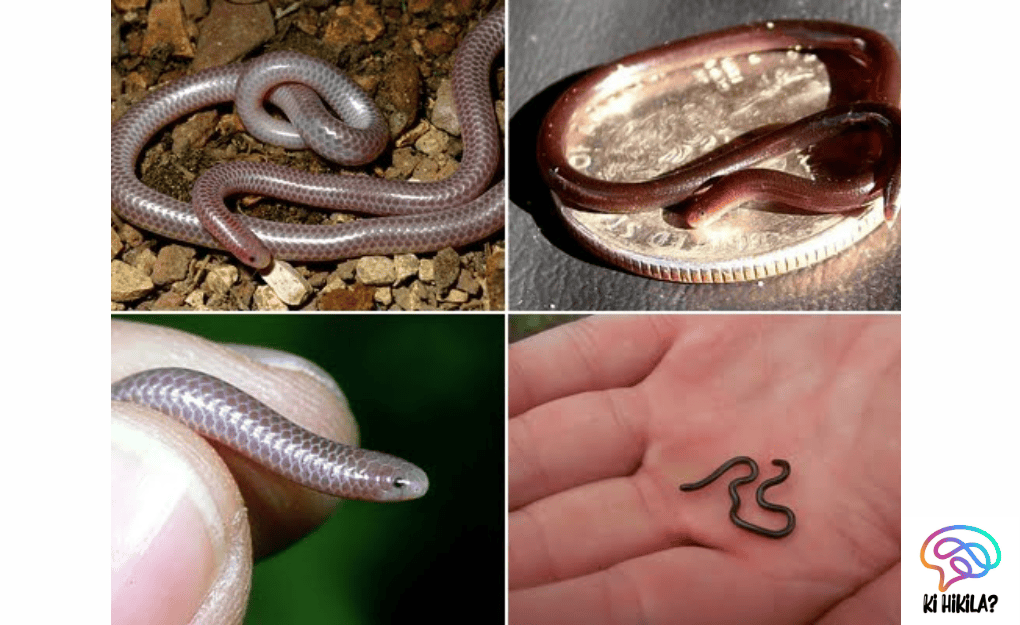The Barbados Threadsnake, known scientifically as Tetracheilostoma carlae, is the world’s smallest-known snake—measuring just 10 centimetres in length. Once feared extinct, this elusive and tiny reptile has made headlines in 2025 with its remarkable rediscovery, nearly two decades after its last confirmed sighting. Its reappearance has not only sparked scientific excitement but has also ignited broader discussions about biodiversity preservation and habitat conservation across the Caribbean, particularly on the island of Barbados.
Barbados Threadsnake: A Tiny Wonder of Nature
The Barbados Threadsnake is a blind, burrowing creature that feeds primarily on ants and termites. Despite its size—small enough to rest comfortably on a coin—it plays a significant ecological role. The snake is pale brown to yellowish in colour, with distinctive dorsal lines and side-positioned eyes adapted for its subterranean lifestyle. Its reproductive habits are equally unique, laying only a single, slender egg, unlike most snakes which produce multiple eggs or live young.
Its minuscule size and burrowing behaviour make it notoriously hard to detect. This is one of the key reasons why it had remained unobserved for so long, leading many to believe it had gone extinct.
History and Scientific Discovery
The species was first described in 2008 by American biologist S. Blair Hedges, who identified it as distinct from the more widespread Brahminy blind snake. Genetic testing confirmed it to be a new species, and he named it after his wife, Carla—hence the scientific name Tetracheilostoma carlae. At the time of the discovery, only three specimens were known to exist, held in natural history museums in London and California.
Its rediscovery in 2025 came after a year-long field search by Connor Blades, a conservationist working with Barbados’ Ministry of Environment. The snake was found under a rock in a patch of forest—its wriggling body almost imperceptible to the naked eye. Identification was only confirmed after a still photograph allowed for close morphological examination, a testament to how elusive the species is.
Ecological Role and Habitat Threats
Despite its tiny stature, the Barbados Threadsnake is ecologically significant. It helps regulate insect populations, particularly ants and termites, thus contributing to the island’s fragile ecological balance. More importantly, it is endemic to Barbados, meaning it is not found anywhere else in the world.
Unfortunately, Barbados has suffered extensive deforestation and urban sprawl over the past century, resulting in severe habitat loss. The island today has one of the lowest percentages of original forest cover in the Caribbean. The extinction of other endemic species like the Barbados racer and the Barbados skink signals just how critical habitat protection is for preserving the island’s remaining biodiversity.
Conservation Implications and Global Attention
The rediscovery of the Barbados Threadsnake has prompted renewed calls for urgent conservation measures. Environmental organizations such as Re:wild are now collaborating with local agencies to develop habitat preservation plans. These include designating forest patches as protected zones, curbing deforestation, and raising public awareness.
Moreover, the snake’s reappearance is expected to bolster scientific interest and funding for Caribbean biodiversity research. By positioning the threadsnake as a flagship species, conservationists hope to secure long-term efforts aimed at safeguarding other lesser-known creatures teetering on the brink of extinction.
A Symbol of Hope
In many ways, the Barbados Threadsnake has become a symbol of resilience and hope. Its return offers a rare second chance—not only for the species itself but also for conservation in one of the world’s most ecologically vulnerable island nations.
This rediscovery underscores an important message: even the smallest creatures matter, and their survival is intertwined with the health of the broader environment. As Barbados takes steps to protect its natural heritage, the threadsnake stands as a tiny yet powerful reminder that biodiversity preservation is a global responsibility.
Conclusion
The Barbados Threadsnake may be the world’s smallest snake, but its rediscovery in 2025 is creating big ripples in conservation efforts. Protecting its habitat will not only ensure the survival of this species but also strengthen the ecological resilience of Barbados as a whole. It is now up to conservationists, policymakers, and the public to ensure that this living thread of Barbados’ natural history is not lost again.



